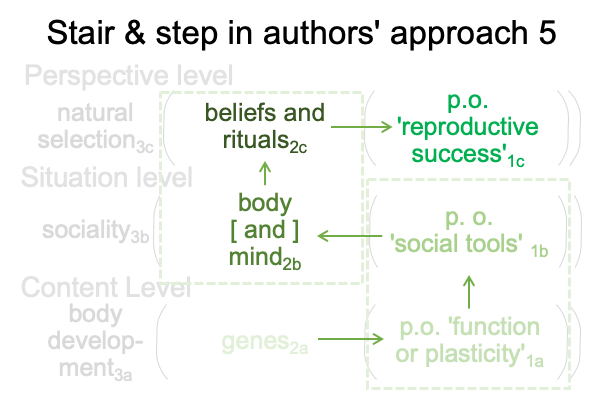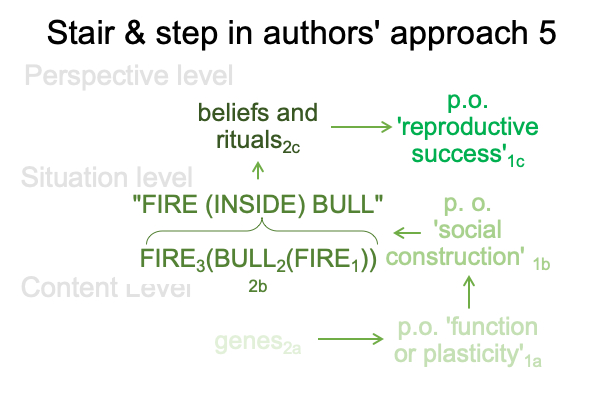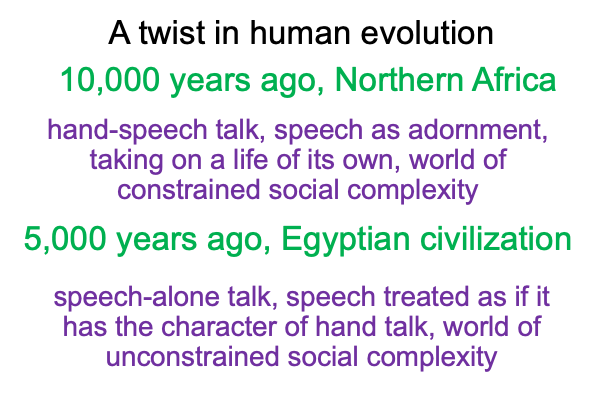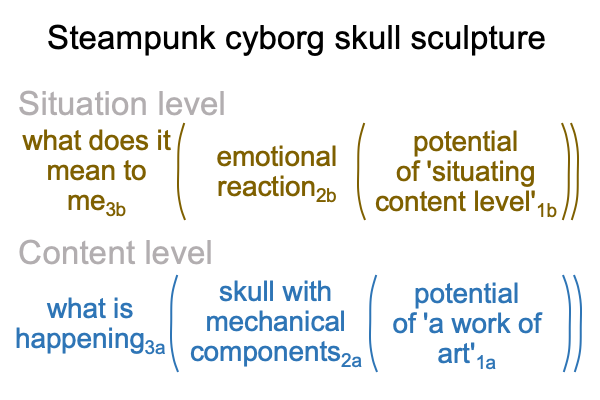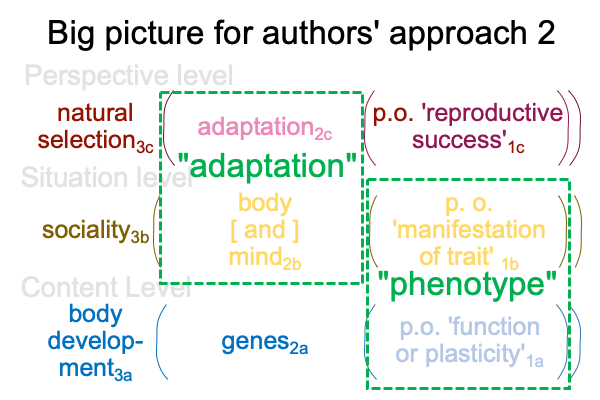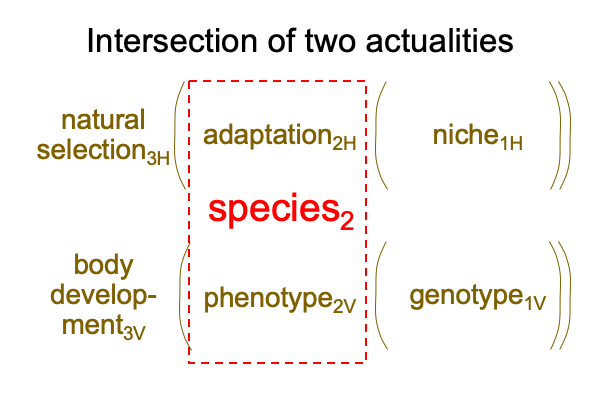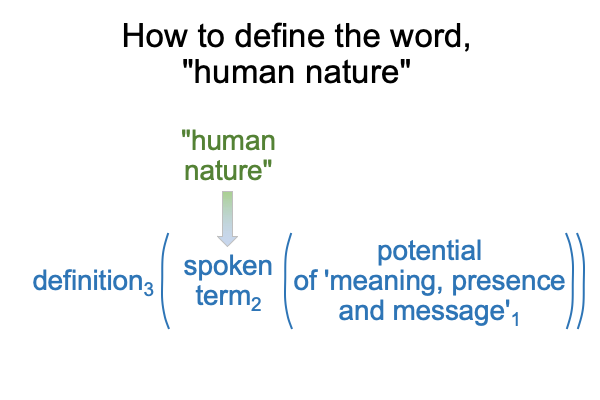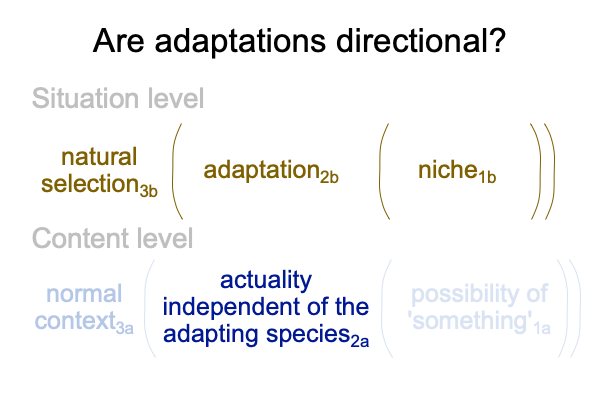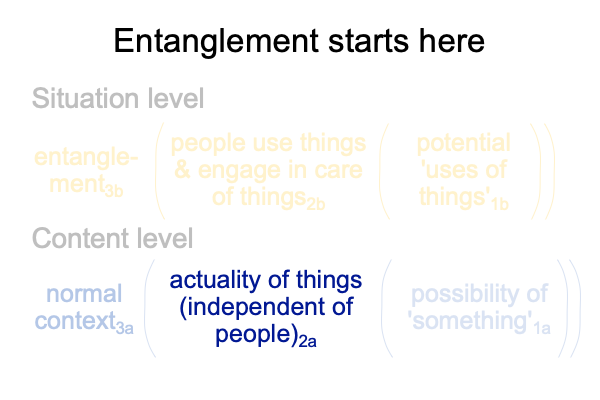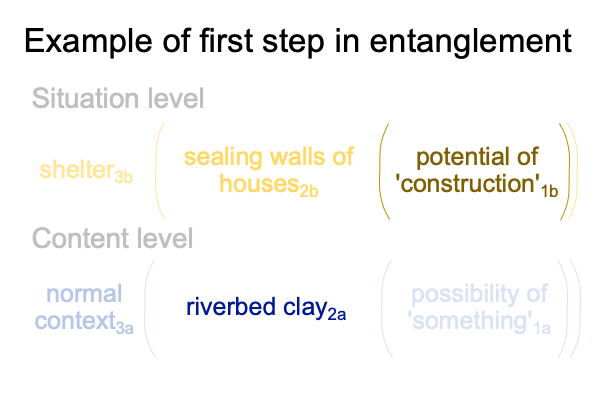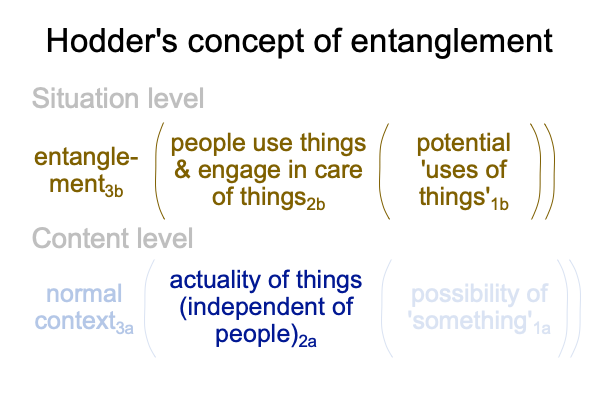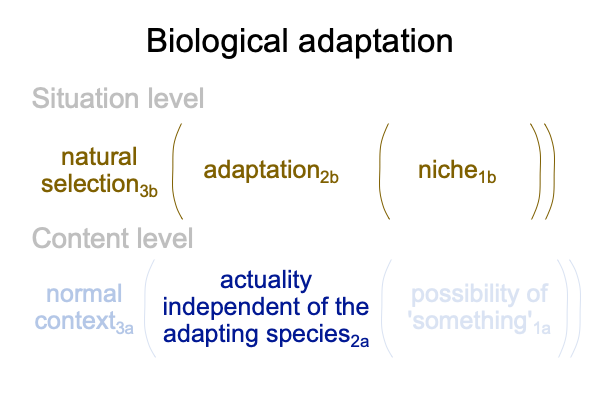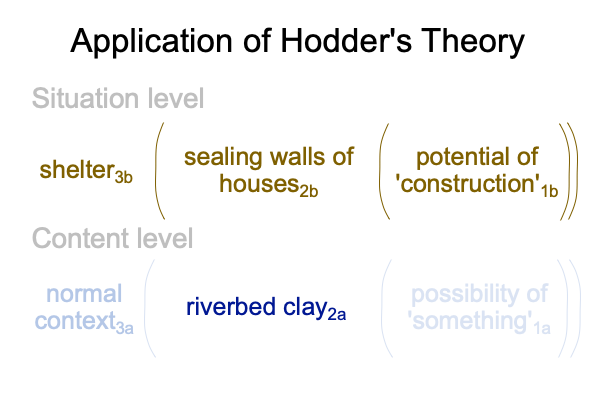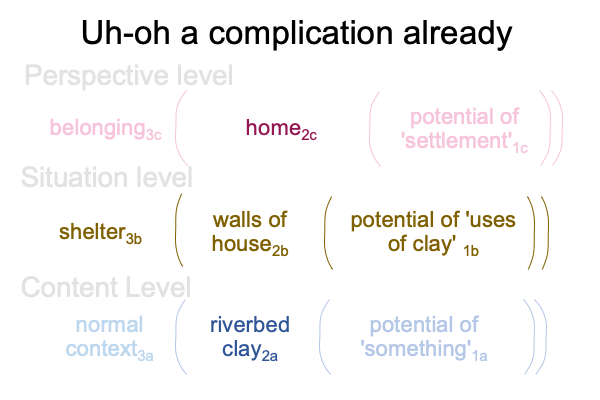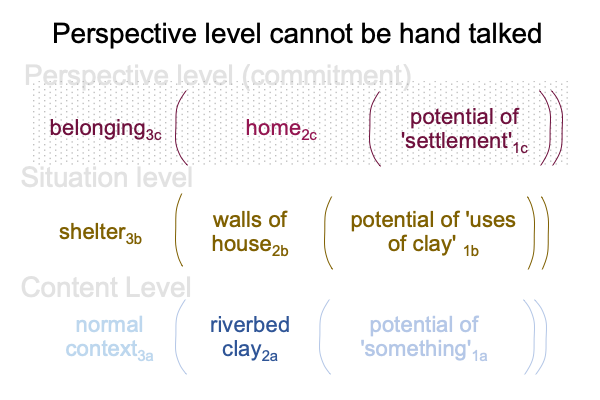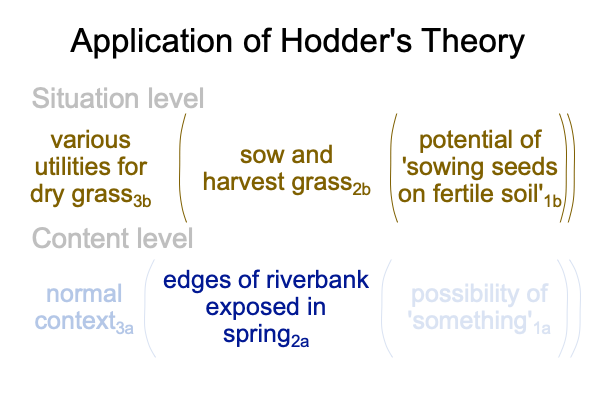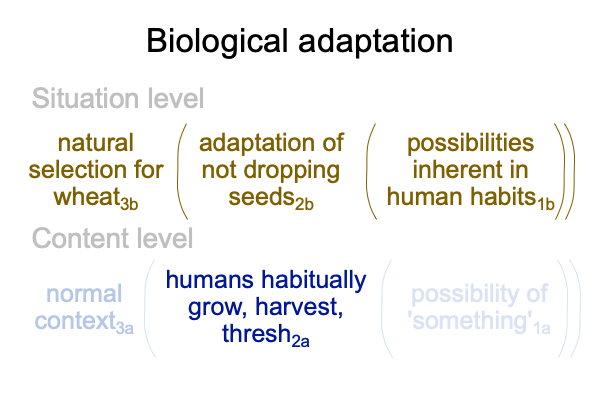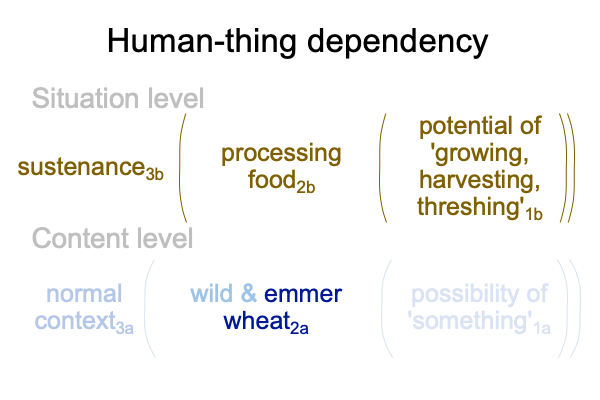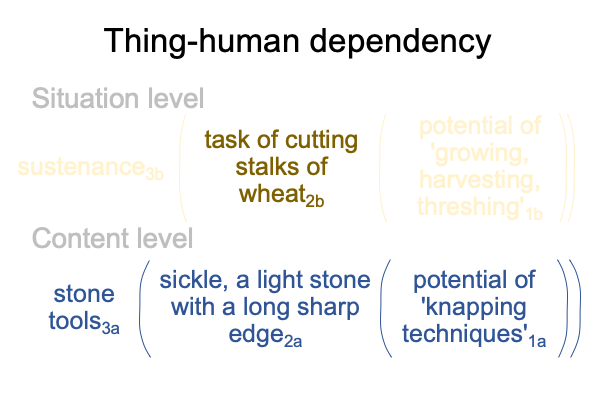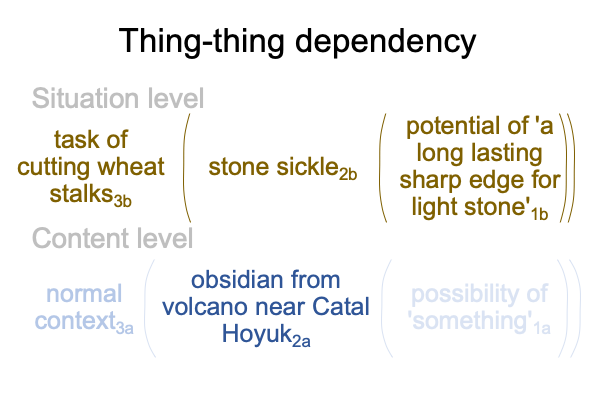Looking at Lesley Newson and Peter Richerson’s Book (2021) “A Story of Us” (Part 13 of 16)
0111 So, what have Newson and Richerson missed?
Well, as far as Razie Mah’s, The Human Niche, is concerned, I should turn the question around and ask, “What does their book have to offer?”
0112 Here is the fourth depiction of the authors’ approach, using the three-level interscope.
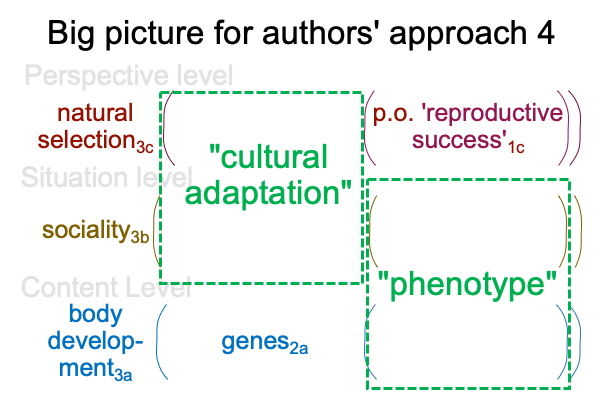
0113 The authors’ approach may be rendered as a purely relational structure. Key terms in their discussion are on display in every slot in the three-level interscope. Every slot is occupied. Particular importance is given to category-crossing terms.
0114 Because completed three-level interscopes are inherently satisfying, the authors various arguments deliver a feeling that they all come together into a coherent whole.
This is an implicit abstraction.
This book holds together like a well-performed orchestration.
0115 Not unsurprisingly, Razie Mah proposes that the three-level interscope may serve as a purely relational model for langue, the mental system of differences that relates to parole (expressed as hand-talk, hand-speech talk or speech-alone talk). One human may engage in word-gestures (hand talk) or vocal utterances (speech talk) as parole, but all conversants fill in the blanks of the same relational structure, the three-level interscope that is langue.
See Comments on Robert Berwick and Noam Chomsky’s Book (2017) Why Only Us?, available at smashwords and other e-book venues.
0116 But, is the above interscope correct?
No and yes.
No, examine the first column in approach 4. The virtual nested form in the realm of normal context does not hold together. Does the normal context of natural selection3a virtually bring the actuality of sociality3b into relation with the potential of body development3a? Uh, what am I saying? Yes, it seems to hold together.
That is one beauty of filled-in three-level interscopes. Even when the interscope is somewhat questionable, the satisfaction gained from having each element occupied is profound. This is what humans evolved to do. Newson and Richerson, as professional anthropologists, have (perhaps unintentionally) illustrated one of humanity’s hidden evolved traits. It is hidden, because anthropologists, pretending to be scientists, rather than rational inquirers, seek out and promote only material and instrumental causation.
0117 Another hidden gem within their approach is pictured in red in the following diagram.
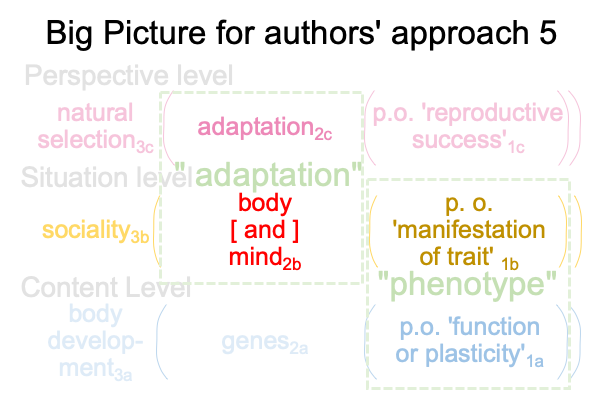
0118 The dyad, body [and] mind2b, encompasses both social interactions [stimulate] hormonal responses2b and culture [informs] brains2b. The body2b concerns signals. The mind2b concerns signs.
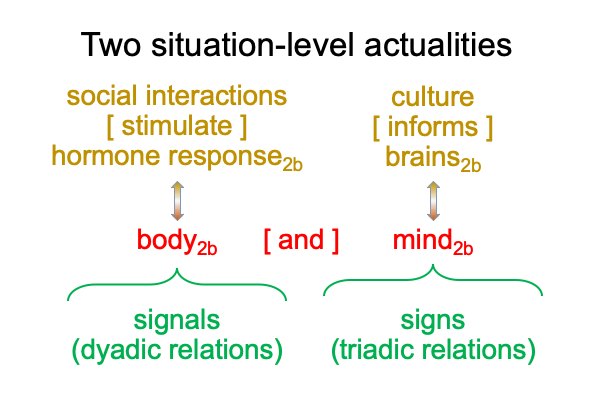
0119 To me, this gem touches base with the notion that hominins adapt to a wider and wider variety of social interactionsin terms of both cathexis and cognition. Plus, this gem also reminds us that culture consists in information, defined as both signs and sign-processes. Finally, this gem re-emerges in our current Lebenswelt as one of the evocative distinctions realized from many civilized traditions. In the Greek and Roman and then Christian traditions, the normal context of spirit3 brings the actuality of mind [and] body2 into relation with the possibilities inherent in a soul1.
0120 This brings me to the stair and step pattern that transports the reader from the realness of genes2a to the potential of reproductive success1c. The stairs coincide with the author’s category-crossing imputations in the terms, “phenotype” and “adaptation”. The steps go either from potential to actuality or from actuality to potential.
Follow the green arrows in the following figure.
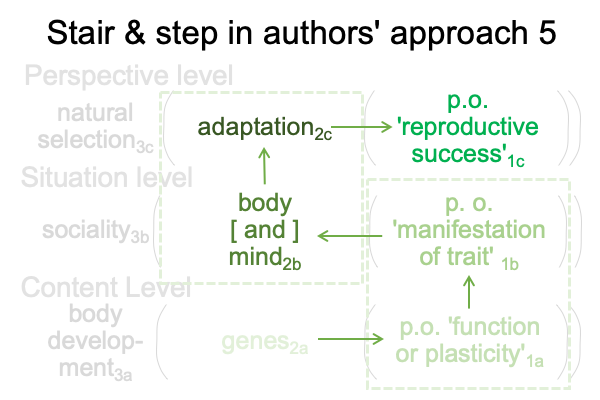
0121 While I may be disappointed that the authors do not identify sign-processing as a key feature of the human niche, I am not disappointed in the authors painting in all the elements of a three-level interscope with features of their story about us. If, as noted earlier (point 0115), the three-level interscope gives us insight into the nature of langue, then their success in this regard presents the reader with a work of art, as well as a work about science.
Indeed, the authors offer a new look at human evolution.

